
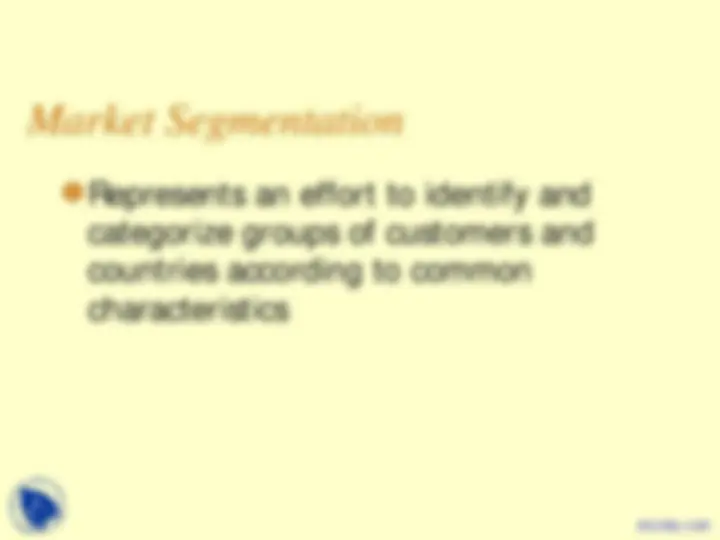





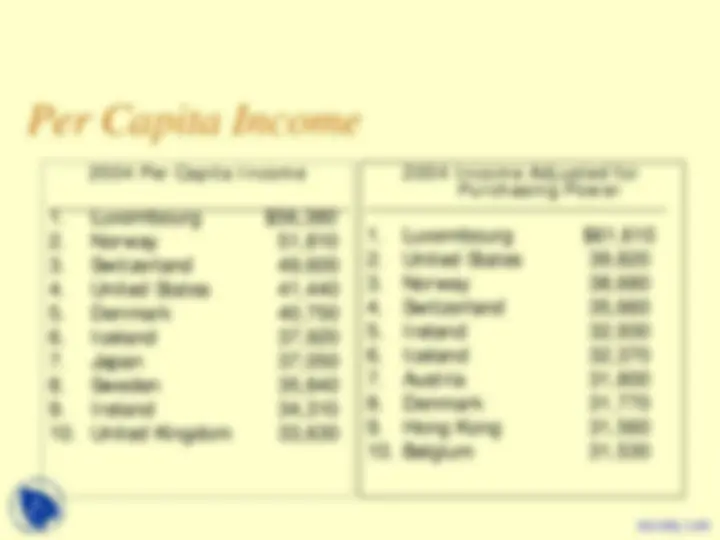
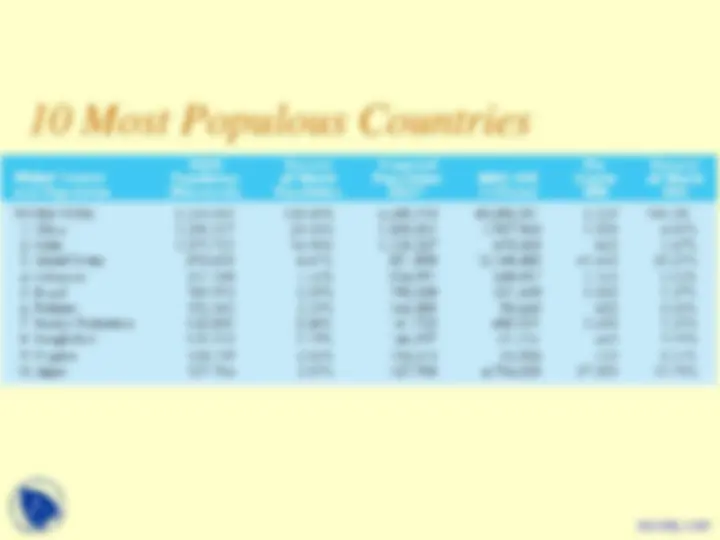
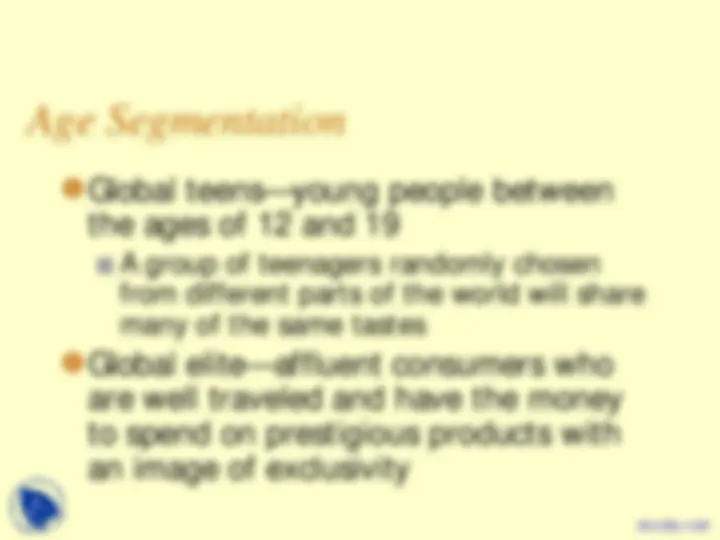



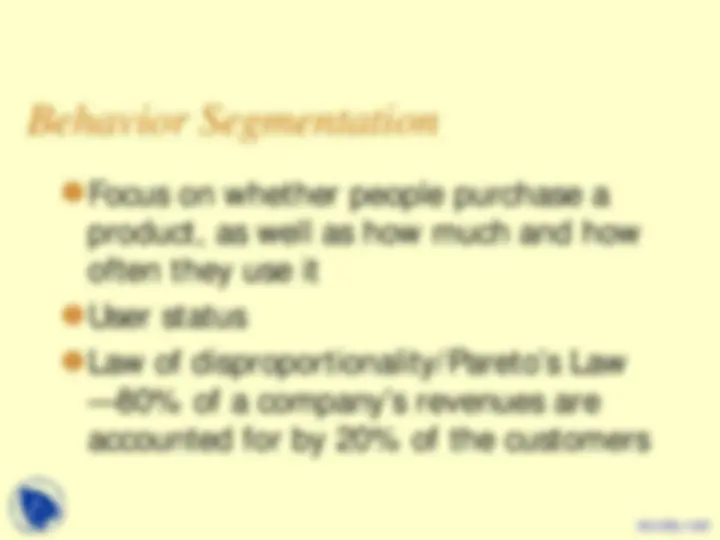

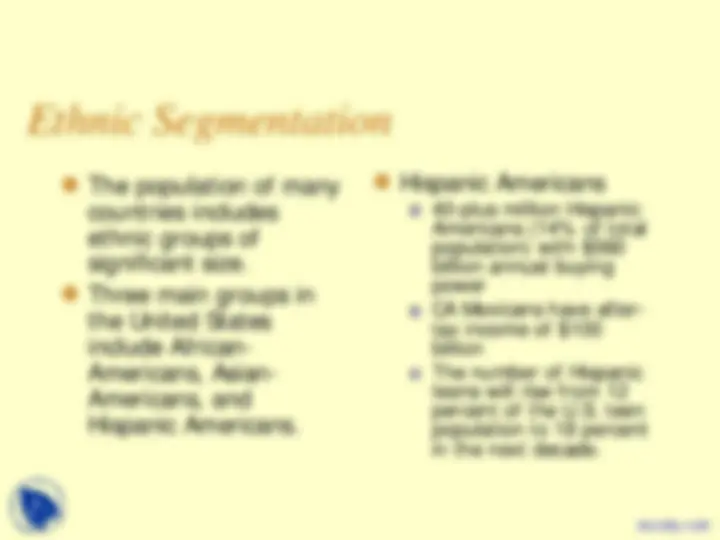




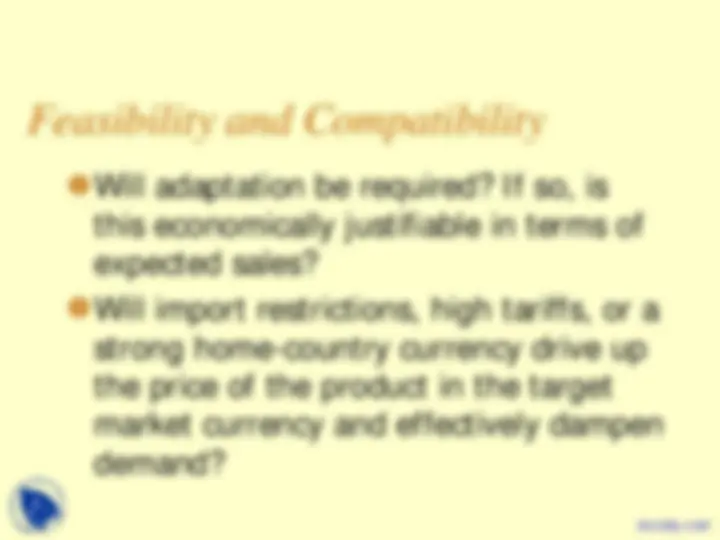

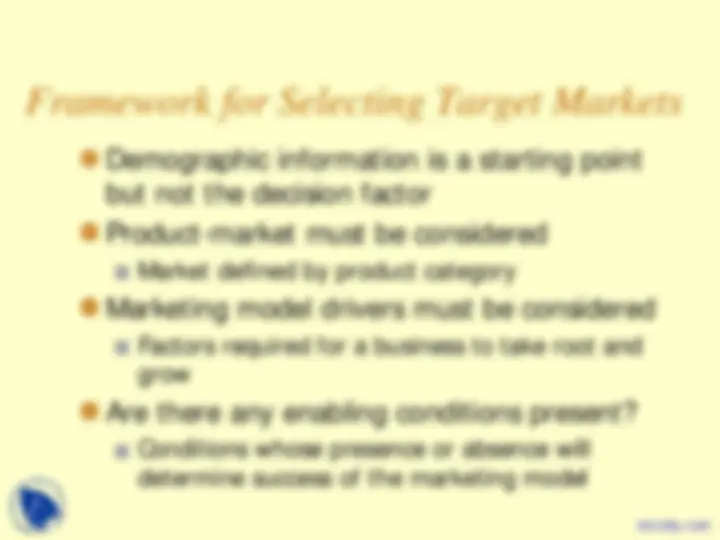


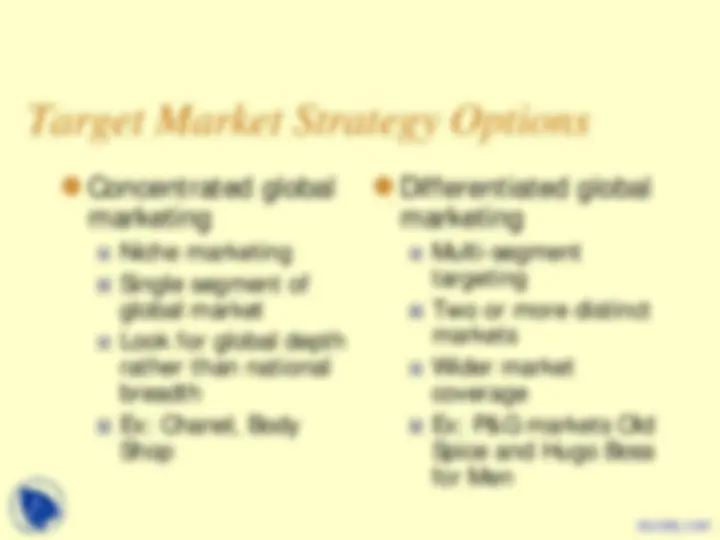







Study with the several resources on Docsity

Earn points by helping other students or get them with a premium plan


Prepare for your exams
Study with the several resources on Docsity

Earn points to download
Earn points by helping other students or get them with a premium plan
Community
Ask the community for help and clear up your study doubts
Discover the best universities in your country according to Docsity users
Free resources
Download our free guides on studying techniques, anxiety management strategies, and thesis advice from Docsity tutors
The concepts of market segmentation, targeting, and positioning in the context of global marketing. It discusses the importance of identifying and catering to different customer groups and countries based on common characteristics. The document also contrasts conventional and unconventional views of global segmentation and provides examples of demographic, psychographic, and behavioral segmentation. Furthermore, it discusses the role of income, population, age, gender, education, and psychographics in market segmentation.
Typology: Slides
1 / 38

This page cannot be seen from the preview
Don't miss anything!































Assumes heterogeneity among countries Assumes homogeneity within a country Focuses on macro-level cultural differences Relies on clustering of national markets Less emphasis on within- country segments
Assumes emergence of segments that transcend national boundaries Recognizes existence of within-country differences Emphasizes micro-level differences Segments micro markets within and among countries
2004 Income Adjusted for